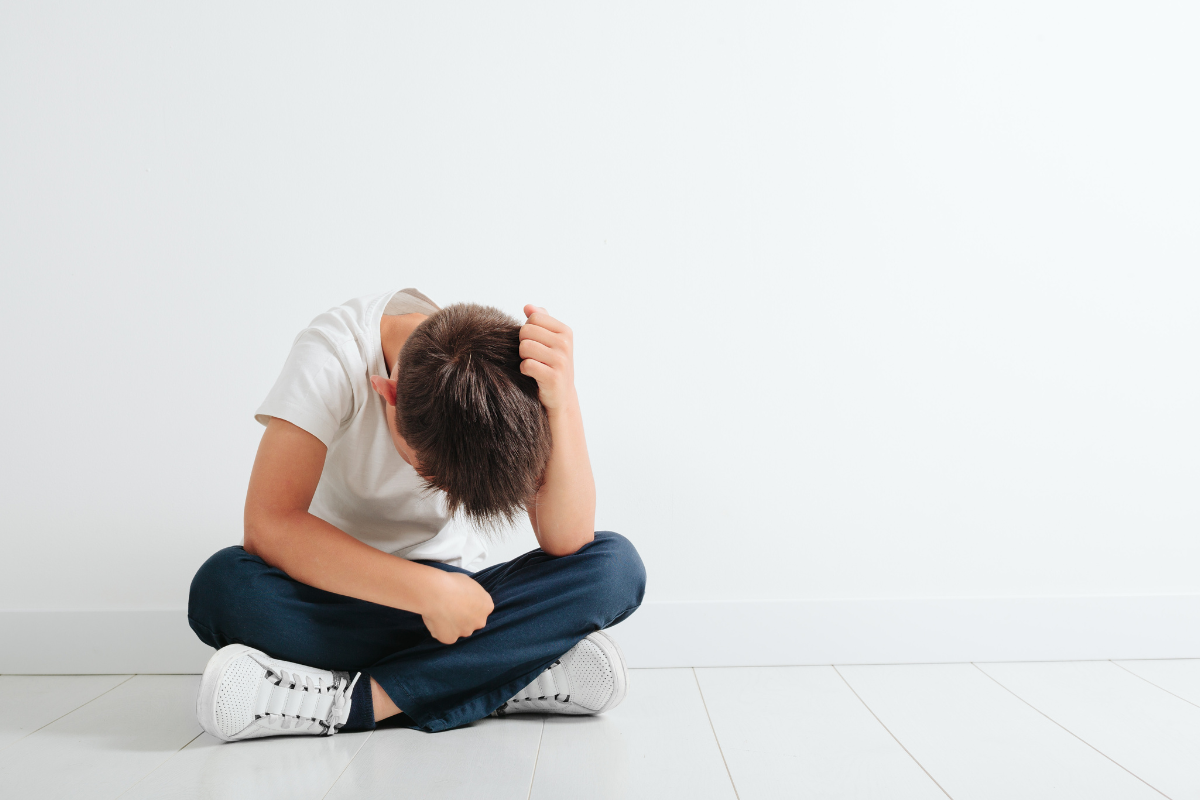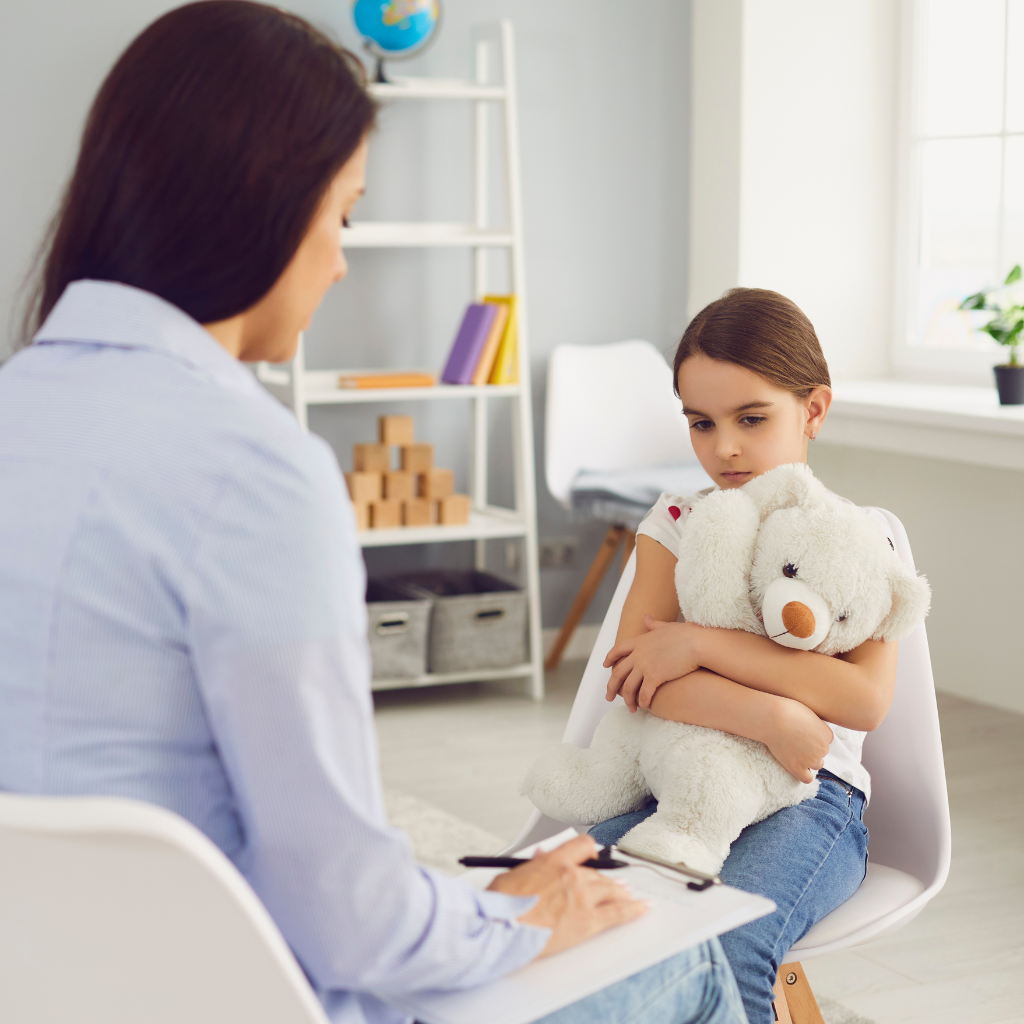Understanding Anxiety Disorders in Children and Adolescents
Meredith Rappaport, PA-C, CAQ-Psy, LCSW

Anxiety isn’t just an adult concern; it significantly impacts children and teenagers as well. It can quietly shape how a child sees themselves, the world around them, and their future. And yet, many young people go years without getting the help they need — simply because their symptoms are misunderstood, brushed off, or hidden behind “good behavior.” Recognizing the signs and understanding the causes of anxiety in young individuals is crucial for early intervention and effective support.
The Roots of Childhood Anxiety
Anxiety in children often stems from a combination of genetic, environmental, and psychological factors. A family history of anxiety or other mental health issues can increase a child’s predisposition to developing anxiety disorders. Environmental influences, such as exposure to stressful or traumatic events, can also play a significant role. Additionally, children with certain temperamental traits, like shyness or behavioral inhibition, may be more susceptible to anxiety.

Impact of Anxiety on Children and Adolescents
Anxiety can profoundly affect various aspects of a young person’s life. Academically, it may lead to difficulties in concentration, resulting in declining performance and school avoidance. Socially, anxious children might withdraw from peers, leading to isolation and hindering the development of essential social skills. Physically, anxiety can manifest through symptoms like headaches, stomachaches, and fatigue, further impacting daily functioning.
What Causes Anxiety to Develop?
There’s no one answer, but here’s what researchers and clinicians know:
- Biology and family history: A child with a parent who has anxiety is more likely to develop it themselves.
- Stressful or unpredictable environments: Family conflict, loss, illness, or exposure to violence can all be risk factors.
- Social media and academic pressure: Teens in particular feel the weight of being constantly “on” and measuring up to their peers.
- Perfectionism and high expectations: Kids who internalize the message that mistakes = failure often develop anxious thought patterns.
Understanding the cause helps guide treatment — but what matters most is that we respond with compassion, not blame.
What Are the Signs of Anxiety in Children?
Identifying anxiety in children can be challenging, as many kids won’t say “I’m anxious.” Instead, their behavior does the talking.
Watch for signs like:
- Repeated stomachaches, headaches, or complaints of not feeling well
- Constant “what if” questions or needing reassurance
- Avoidance of school, sleepovers, birthday parties, or unfamiliar places
- Trouble sleeping or frequent nightmares
- Irritability or meltdowns that seem “out of nowhere”
- Fear of making mistakes or not being “good enough”
- Reluctance to separate from parents or try new things
- Excessive clinginess or panic when routines change
These aren’t kids being dramatic. These are kids trying to cope.
Treatment Options for Anxiety in Children

Anxiety is very treatable and early support makes a big difference. Effective treatments are available for managing anxiety in children and adolescents:
- Cognitive-Behavioral Therapy (CBT): A highly effective, evidence-based approach that helps children identify and manage anxiety-provoking thoughts and behaviors. CBT has been shown to significantly reduce anxiety symptoms in youth.
- Medication: In some cases, healthcare providers may prescribe medications, such as selective serotonin reuptake inhibitors (SSRIs), to help manage severe anxiety symptoms. Medication is typically considered when therapy alone is insufficient.
- Lifestyle Modifications: Encouraging regular physical activity, sufficient sleep, and a balanced diet can support overall mental health and alleviate anxiety symptoms.
- Parental Support and Education: Educating parents about anxiety disorders and involving them in the treatment process can enhance outcomes. Family therapy may also be beneficial in addressing familial factors contributing to anxiety.
Early intervention and a comprehensive treatment plan tailored to the individual needs of the child are essential for effective management.
Final Thoughts
Anxiety disorders in children and adolescents are prevalent and can significantly impact various aspects of life. Understanding the roots, recognizing symptoms, and seeking appropriate treatment can empower families to support their children effectively. If you suspect your child is struggling with anxiety, consulting a mental health professional can provide guidance and access to resources tailored to your child’s needs.
Responsibly edited by AI
Other Blog Posts in
Animo Sano Psychiatry is open for patients in North Carolina, Georgia and Tennessee. If you’d like to schedule an appointment, please contact us.
Get Access to Behavioral Health Care
Let’s take your first step towards. Press the button to get started. We’ll be back to you as soon as possible.ecovery, together.




